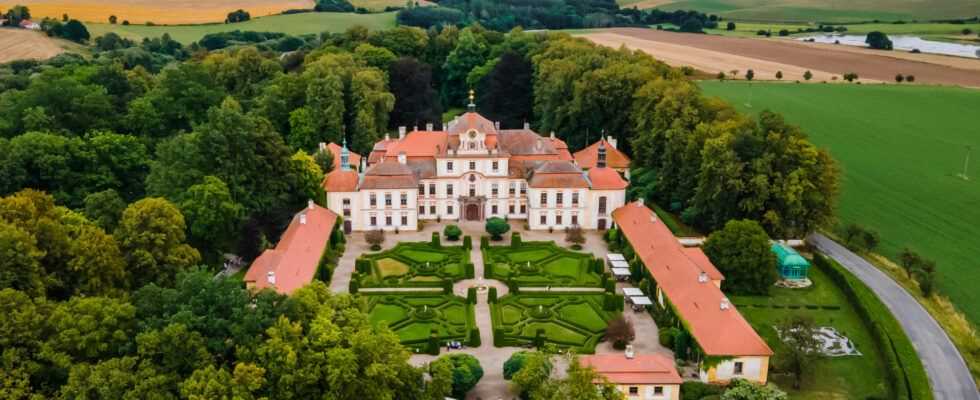ReportingIn the Prague countryside nestle Baroque palaces and medieval fortresses. Wonders that conceal treasures, works of art, rare works and paintings by masters.
What if Prague’s best-kept secret was its surroundings, this central Bohemia dotted with Baroque palaces and medieval fortresses? By touring the beautiful countryside that surrounds the Czech capital, and sometimes sleeping in these houses several hundred years old, it is to discover the history of the country that we set out, from the distant wrens of the Saint – Germanic Roman Empire until the “velvet revolution” in 1989.
A bright sun illuminates the pure white facade of Jemniste Castle, whose high windows are highlighted in aureolin yellow.
Georges de Lobkowicz, owner of Melnik Castle, 60 km north of Prague, explains it very simply: “During the Czechoslovak Socialist Republic [1948-1989], the communist state became the sole owner of all the castles in Bohemia. But after the arrival in power of Vaclav Havel, these vast estates quickly appeared to be too heavy a burden for the Czech state, which offered to the descendants of the former owners to return their property to them. My family has recovered more than ten, in varying degrees of condition. That’s how I left my life as a banker in France to come back to make wine here, at the confluence of the Elbe and the Moldau. “
To jump into this great aristocratic bath, Jemniste Castle – a baroque splendor built in 1724 – is an ideal first stop. It can be reached in an hour’s drive from Prague airport. Night has fallen when we ring at the gate. It is Izabela Sternbergova, the daughter of the owners, who welcomes us. She lives with her parents on the first floor of the east wing of the castle. In the garden, three apartments have been fitted out to welcome visitors. Ours entirely occupies the four rooms of one of the two entrance pavilions of the park: a vestibule, a large wood-paneled bedroom, a living room where a fire prepared in the fireplace simply waits for a match to be struck, and a large room. bath.
The huge restaurant, the Cafe Custoza, is installed under the vaults of the old stables: tables and chairs are covered with an opaline green fleece damask, the walls engravings and paintings surround sixteen feeders and as many old drinking troughs carved in stone. Dinner consists of a hot chicken soup, as succulent as it is invigorating, followed by a fillet of venison and a pavlova. By closing the heavy red velvet curtains in our room, we tell ourselves that the stage for the next few days is set: welcome to the life of the castle.
You have 70.69% of this article to read. The rest is for subscribers only.
